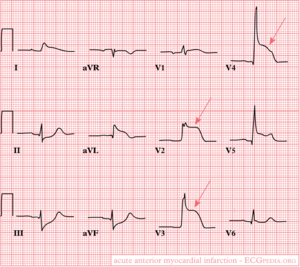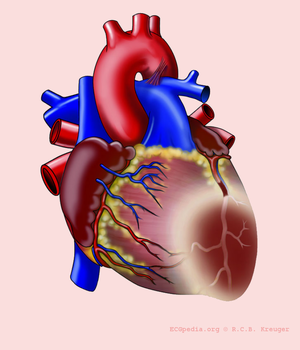Anterior MI: Difference between revisions
Jump to navigation
Jump to search

m (New page: {{Chapter|Myocardial Infarction}} ECG-characteristics:<cite>Wung</cite> ST-elevation in leads V1-V6, I and aVL. Maximum elevation in V3, maximal depression in III later: pathological Q-w...) |
(No difference)
|
Revision as of 20:41, 22 July 2007
| This is part of: Myocardial Infarction |
ECG-characteristics:[1]
ST-elevation in leads V1-V6, I and aVL. Maximum elevation in V3, maximal depression in III later: pathological Q-wave in the precordial leads V2 to V4-V5.

A 2 weeks old anterior infarction with Q waves in V2-V4 and persisting ST elevation, a sign of formation of a cardiac aneurysm.
Encomprises the anterior part of the heart and a part of the ventricular septum. Is supplied by blood by the LAD.

